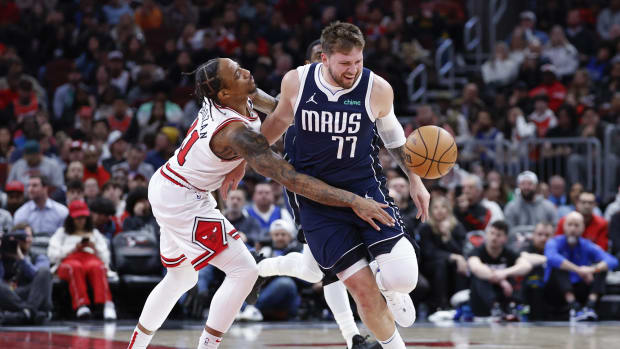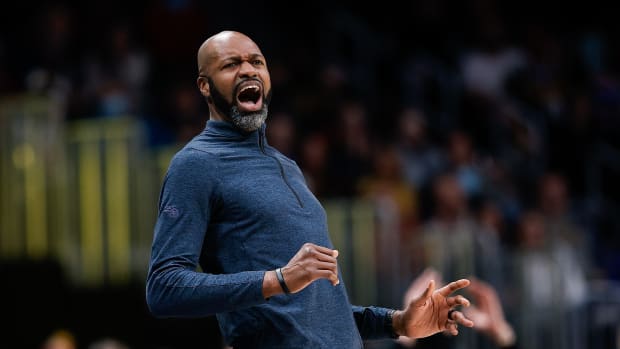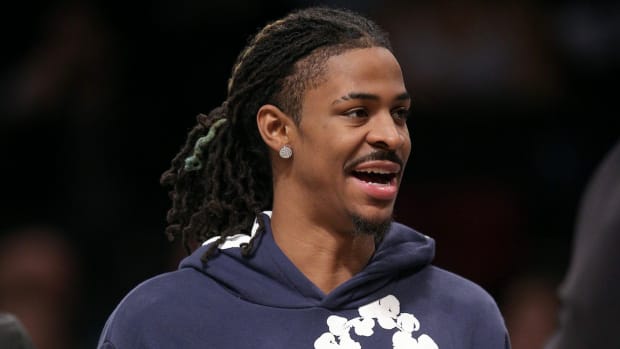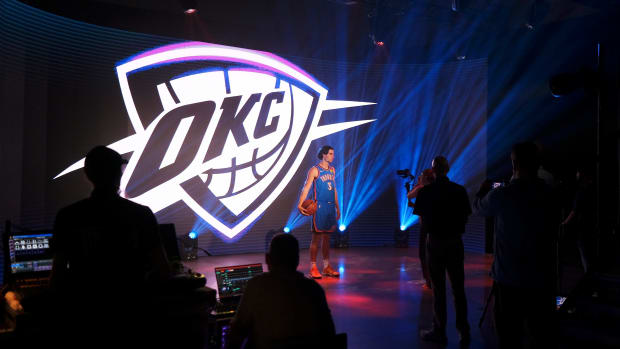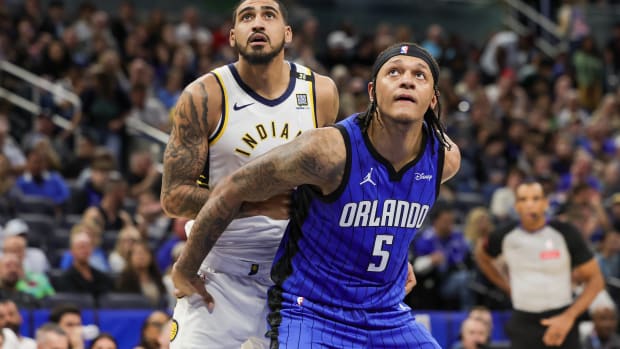The Dominican Dream: Felipe Lopez’s Rise Was More Than a Basketball Story
It’s 1994 and Luis Felipe Lopez—the No. 1 ranked high school player in the country—sits above the rim, proudly waving the Dominican flag as pandemonium hits Fordham gym in New York City. His teammates, fans and family stand below their king, celebrating in Spanish and English as the charismatic senior from Harlem’s Rice High School celebrates the CHSAA championship.
For Rice (now defunct since 2011) it was a historic title and a joyous sporting victory but to Dominicans everywhere, notably those in Washington Heights and the Bronx, the moment transcended basketball because it was a day where one of their own—having only arrived in the U.S five years prior from Santiago de los Caballeros—had made a giant mark on the sport and helped shine a positive light in the eyes of white America when Dominicans and other Latino and Hispanic communities fought for equality in turbulent times.
“It was very special for me and very special for my community,” says Lopez, now 44, as he looks to the camera with subtle glee, his mile-long smile always present.
It’s one of many poignant moments that make for a powerful, poetically-directed film titled The Dominican Dream, part of ESPN’s 30 for 30 series, which premiered at Tribeca Film Festival this past weekend and can be seen on ESPN from Tuesday evening. Using Lopez both as protagonist and guest commentator on his own life, the story (directed by Jonathan Hock) recounts his and his family’s immigrant journey from Santiago in the Dominican Republic to New York City and how his rise as a high school star in the 1990’s—including a front cover on our own magazine at the tender age of 17—hyped him as not just a star, but the star in the making.
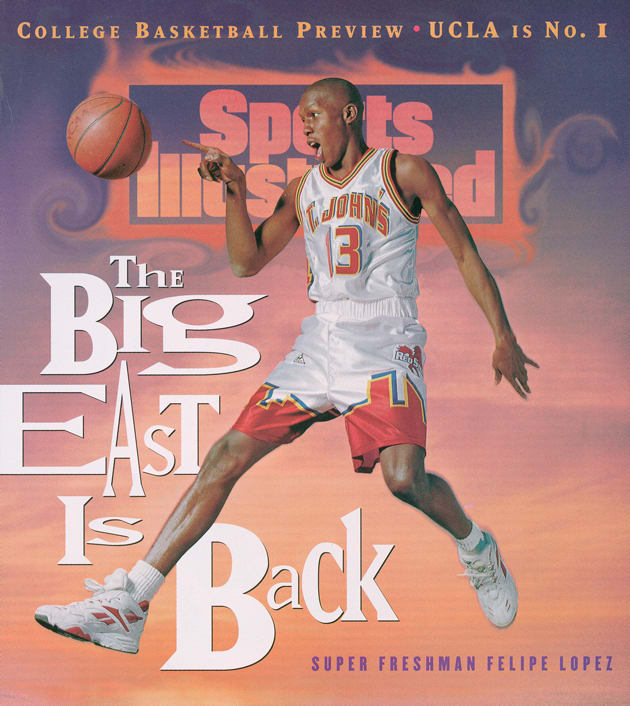
Felipe Lopez dons the cover of Sports Illustrated for the November 28, 1994 issue.
Michael O'Neill/SI
Other voices chime in throughout the story such as Alex Rodriguez, Chauncey Billups and former St. John’s teammate Zendon Hamilton, all expressing with adulation how much this kid meant to so many as his stock kept rising, thus labeling him the “Dominican Michael Jordan.” In 1991, for example, heading into his sophomore year in high school, Lopez was ranked above Allen Iverson as the No. 1 player in the country and his popularity created an avalanche of recognition, especially with the Dominican community. Rice’s gymnasium on game night was the hottest ticket in the city and everyone wanted a part of his rise.
“The word starts on the streets,” says Rodriguez, raised in Washington Heights from Dominican parents and one year younger than Lopez, remembering too well the buzz around the prospect. “They were like ‘Yo, there’s this Dominican kid and he’s got this crazy crossover, he’s 6”6’, he’s got hops, he can shoot....”
Billups adds with a smile, “his handle was wicked, he could dunk on you, running up and down the court speaking Spanish the whole time.”
But as the story continues to unfold we learn of how the hype never truly materialized after leaving high school. There’s the underwhelming college career (he ended as St. John’s fourth all-time scorer but also suffered a heart-wrenching first-round exit as a senior in his only NCAA tournament appearance after a failed game-winning shot) and a short, nomad-like span in the NBA and Europe, all concluding with a basketball life that failed to live up to expectation.
But as we keep watching, one thing becomes abundantly clear: this story—at least the message—is not about basketball or the up-and-down rituals of fame and fan adulation.
Instead, this story is about the American dream seen through the eyes of a black Dominican family and how to them, success was never about the game or the celebrity-status that came with it. For Lopez, in fact, the story of his success continues to be told.
Despite the star-studded guest appearances on the film from former teammates, coaches and media personalities who eloquently portray Lopez’s basketball rise and struggles, the ones who truly drive the story are his own family members, especially his mother Carmen Lopez, a former teacher who back in Santiago founded a school in their family’s own backyard in order to teach local children how to read and write.
Her narrative throughout is the soul of Lopez’s journey as she recounts how she and her husband Luis decided to move to America in 1986 in search for a better life.
“As always, as immigrants, we came looking for new horizons,” she says speaking to the camera. “We came looking for opportunities.”
Due to visa denials, however, the two youngest children (which included Felipe and his sister Sayunara) were not able to join them until three years later.
“That moment was very hard for me," she says. "We had never been apart. We were always together. I had to leave Felipe who was very young. I had to leave Sayu.”
But once reunited, the family began their new life and Lopez’s introduction to New York City basketball. His older brother Anthony made the first move, contacting the New York Gauchos—a 50-year-old youth basketball program in the heart of the Bronx. After much persuasion, Lopez tried out for coach Dave Jones and his first test was a one-on-one against the program’s best player.
“He [Lopez] did something that really impressed me,” says Jones, looking back on the day when he first saw Lopez play. “He did a 360 off the baseline and dunked it on everybody…[laughs]…so he was legit. It was like a dream to see a kid who come like this, at 14 years old.”
Lopez’s rise grew and the story, familiar to most basketball fans, takes him to Rice High School, making him the most exciting young player in the country and eventually staying close and picking St. John’s as his alma mater. But the direction, thanks to Lopez’s added narrative, also describes his personal struggles, from the difficulties he had in learning English to being racially abused from the stands when he failed to perform in college. Lopez dealt with depression during his worst times at St. John’s and the inability to live up to everyone’s expectations hurt him deeply, especially his sophomore year.
“I went down mentally, psychologically, I was not happy,” says Lopez.
The deep sadness of being unable to deliver didn’t come from personal ego but rather it was because he felt he was letting down a nation that carried so much faith on his success.
“To be the chosen one, to be the chosen one is a much more complex thing,” says famed marketing executive and sneaker impresario Sonny Vaccaro, speaking to the camera, “because of being Dominican, because of being a foreigner. The burden was a hell of a lot more than just not being the best. He was all their dreams.”
“I think it goes to a different level when you talk about representing your country,” adds Chris Mullin, who just left St. John’s coaching role after four seasons. “And now you’re talking like each and every game it’s almost like Olympics. So you’re representing yourself, your family, the Dominican community in New York City, but yet the Dominican Republic—the whole country, so this is added pressure that each and every time you step out there, you got to make a huge statement.”
And this is where The Dominican Dream triumphs, as the film enforces the viewer to remember the human aspect of Lopez’s career and his journey as an immigrant as well as an athlete.
The documentary’s conclusion, therefore, is the renaissance of Felipe Lopez, not as a former basketball player but rather a man who uses what the game has offered him in order to enhance his community. After retirement from playing, Lopez embarks on a mission to build organizations, including The Felipe Lopez Foundation, based out of his church in the South Bronx providing help and guidance to local children, and his work as an ambassador with NBA Cares, where he takes constant trips to the Dominican Republic for major causes, including the aim to reduce and eventually eliminate Malaria and basketball related programs around the island.
The Dominican Dream is an immigrant tale, a personal victory camouflaged as a failed basketball career where, thanks to the unconditional love and nurturing of his family, the hero finds true happiness while also realizing that throughout the good times and the bad, his community was always there, ready to welcome him home.
The Dominican Dream can seen on Tuesday, April 30 on ESPN and ESPN Deportes at 9 p.m. ET
































